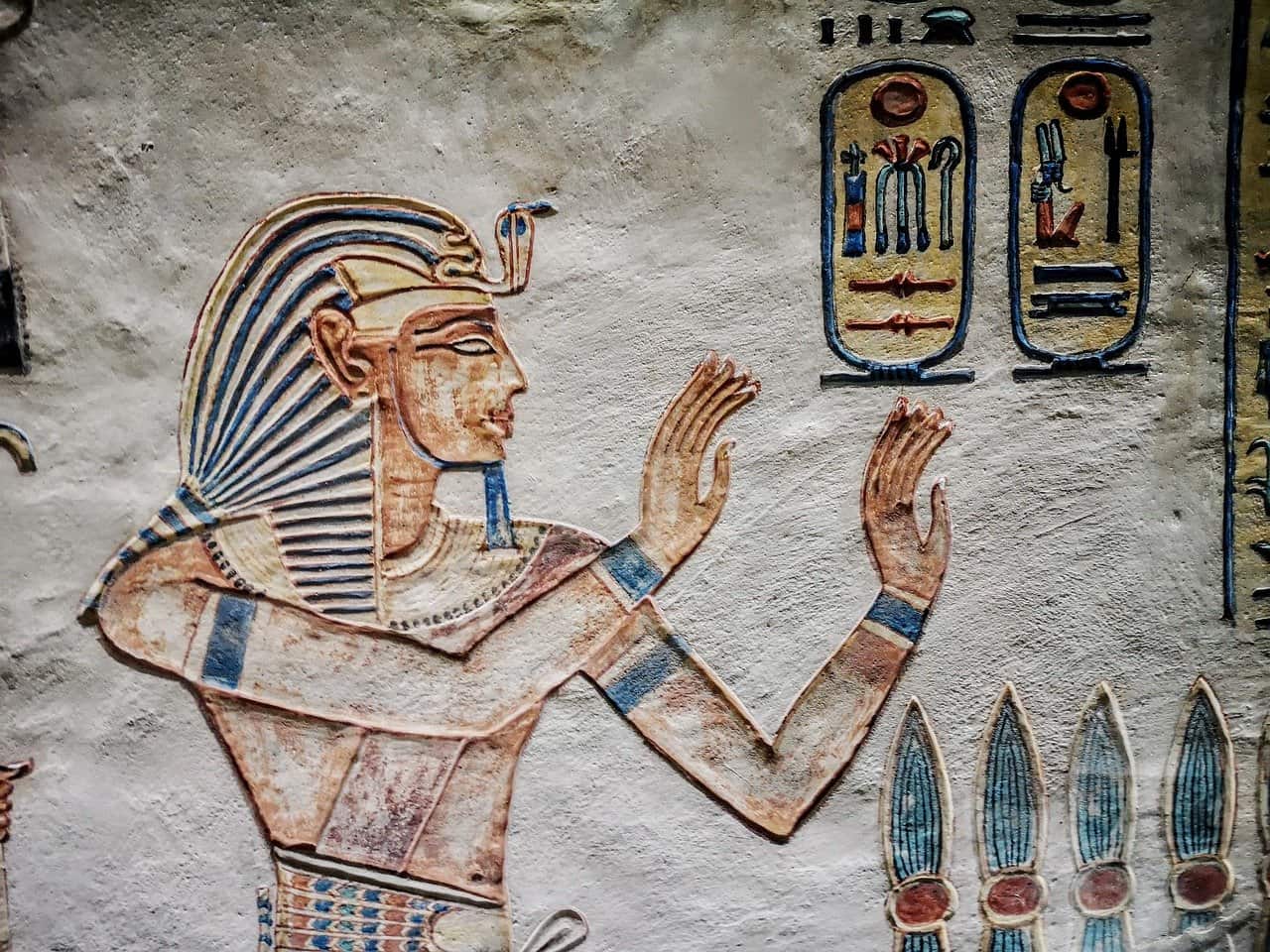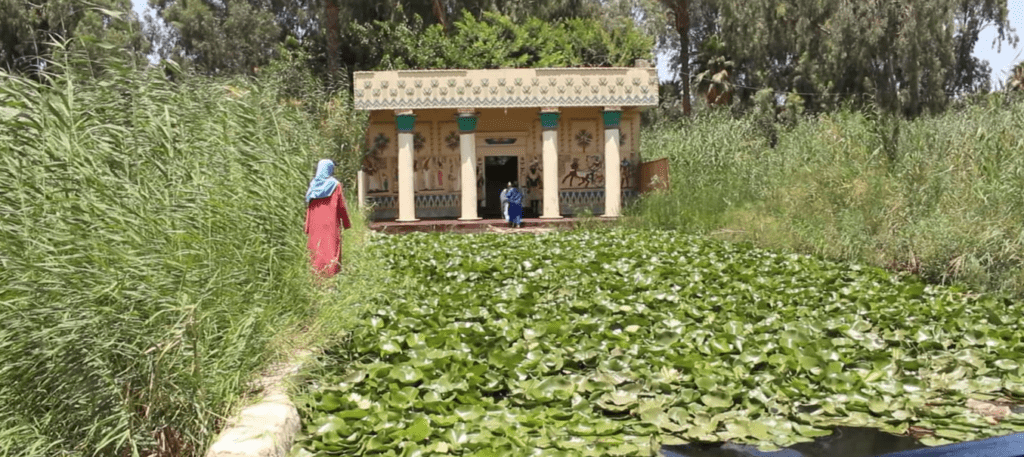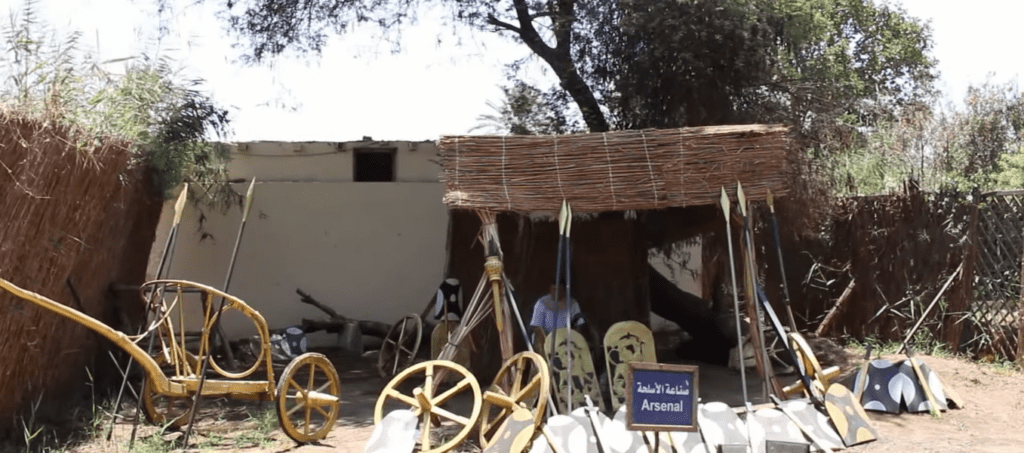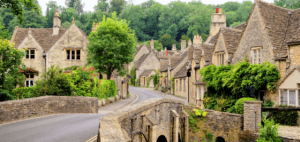The Stunning Pharaonic Village in Cairo, Egypt

Updated On: April 18, 2024 by Ciaran Connolly
The Pharaonic Village offers a unique experience. Visiting the Village is like travelling to so many places in only one place. Every inch soaks in Egyptian history and legend. You’ll get to explore something new about Ancient Egypt when one of the greatest civilizations once lived.
Location
On the West bank of the Nile, the Pharaonic Village is situated on Jacob’s Island at 3 al-Bahr al-A’zam Street, about six miles from the centre of Cairo. Accommodation should not be an issue since the Village is far from most hotels.
Village History
The Pharaonic Village started as a concept envisaged by Dr Hassan Ragab, the man behind the foundation of the Village. It was initially a papyrus plantation. Dr Ragab, after years of research, reintroduced this paper plant that had been extinct for a thousand years by planting a bed of papyrus roots acquired from Sudan and Ethiopia on Jacob’s Island, and, therefore, this island became a papyrus plantation once again in 1966.
Dr. Ragab’s vision was to create a detailed replica of an Ancient Egyptian community. In 1977, the dream started to come true. Implementation began to take place; a network of canals was dug overseeing scenes of ancient agricultural and rural life; waterways were made; over 5,000 trees were planted, such as weeping willows, sycamores and date palms, trees that are easily identified in tomb paintings as a typical part of the scenery, to screen the Village from the city. Not only was the scenery depicted in ancient paintings brought back to life, but animals and birds depicted in wall paintings were brought back, too, such as the Meidum Goose, which was thought to be extinct. The Pharaonic Village was finally inaugurated in May 1984 in a semi-finished state and has become a significant tourist attraction.
Village Tour – Exhibitions
The Pharaonic Village offers an entertaining and educational atmosphere. It houses unique exhibits holding artefact replicas of items that were present over 5000 years ago. These replicas are carefully manufactured using the same materials and techniques as the originals with such fine detail. There are dioramas and models with as much close detail as possible, reflecting life in Ancient Egypt. You’ll find the following exhibits:
- Dr. Hassan Ragab’s Hall
- Boats of Ancient Egypt Museum
- Pyramids & Sphinx Museum
- Mummification Museum
- Daily Life in Ancient Egypt’s Museum
- Cleopatra’s Exhibit
- Coptic Museum
- Islamic Exhibit
- Napoleon’s Exhibit
- Egypt’s Modern History Museum
- Gamal Abdel Nasser Exhibit
- Anwar El-Sadat’s Museum
- Inventors Museum
- Nubia’s History Museum
- Chinese Civilization Exhibit
- Tomb of Tutankhamun
- Heritage Museum
We’ll help you explore the authentic museums and exhibits of the Village.
- Dr. Hassan Ragab’s Hall
Dr. Hassan Ragab is the founder of the Pharaonic Village. This exhibit features the life of the founder of the Pharaonic Village and includes some of his items, photos and inventions, such as the Cryptograph and Papyrus Restoration Machine.
- Boats of Ancient Egypt Museum
In this exhibit, you’ll find models of several ancient Egyptian boats, such as King Khufu’s solar boat and King Tutankhamun’s funerary boats.
- Pyramids & Sphinx Museum
Have you ever wondered about the secret behind constructing the Pyramids and Sphinx? This exhibit illustrates how Ancient Egyptians used their tools to cut and transport different types of stones for the building process. Not only that but the myths of the Pyramids and Sphinx are also presented.
- Mummification Museum
This museum showcases some replicas of ancient Egyptian mummies, opening the door to the secrets of the art of mummification in Ancient Egypt. You’ll also get to learn a lot about the medical achievements of Ancient Egyptians, particularly in trauma surgery, the oldest prosthetics and the prognosis of numerous injuries in exquisite detail.
- Daily Life in Ancient Egypt’s Museum
Through the models and displays housed in this museum, explore the pharaonic daily life of Ancient Egypt, from pharaonic temples and models of kings and queens to ways of hunting, famous animals, trees and plants.
- Cleopatra’s Exhibit
This exhibit is all about the famous Queen Cleopatra. It also showcases the history of Alexander the Great, the Ptolemies, and the Battle of Actium. Moreover, it displays models of Alexandria, the ancient Library of Alexandria and the Pharos (i.e. the lighthouse), one of the Seven Wonders of the Ancient World. Alexandria, founded by Alexander the Great in 331 BCE, was the ancient world’s capital for 300 years and home to Cleopatra’s palace.
- Coptic Museum
The Coptic Museum has a replica of the Monastery of St. Anthony, the first in the world, and a replica of the Monastery of Saint Catherine. Monasticism originated in Egypt, and from there, it spread throughout the Middle East and Europe. In Alexandria emerged the Catechetical School, the first academic Christian institution from which great Christian scholars, such as Athanasius, originated.
- Art & History of Islam Exhibit
Islam is the major religion in Egypt, with a vast Islamic history, culture, and art. The exhibit displays different models of Islamic art from other countries and the most famous mosques.
- Napoleon’s Expedition to Egypt
This exhibit highlights some main historical events like Napoleon’s conquest of Egypt (1798-1801), which only lasted about three years, yet its consequences to the area were spectacular. Among the events featured in this exhibit is the Battle of the Pyramids, where Napoleon defeated the Mamluks at Imbaba, 13 miles north of the Pyramids; the Battle of the Nile fought in Abu Qir Bay, 11 miles east of Alexandria, where Horatio Nelson leading the British Navy defeated the French Armada.
There is also an original-sized replica of the Rosetta Stone discovered by Pierre Bouchard in Rosetta. It played a significant role in deciphering hieroglyphics since it was written in Egyptian and Greek. The exhibit features the role of The French Scientific Expedition brought by Napoleon, describing, drawing and cataloguing all ancient Egyptian temples, antiquities, as well as the fauna and flora of the country, which was all eventually published in the 28-volume Description de l’Égypte in 1828.
- Egypt’s Modern History Museum
With its rich royal décor, the museum features 52 public figures, Khedives, Sultans, Kings, politicians, artists, etc, of modern history (1805–1952 C.E.) in 38 statues and more than 150 photos and portraits. Moreover, a maquette is displayed featuring essential events and incidents, such as the digging of the Suez Canal.
- Gamal Abdel Nasser Exhibit
In this museum, visitors explore the life, accomplishments, and actual belongings of Egypt’s second President, Gamal Abdel Nasser, and a big maquette of Aswan High Dam.
- Anwar El Sadat
This museum features the life, accomplishments and original belongings of Egypt’s third President, Anwar El Sadat, the man of war and peace who ruled Egypt as president for eleven years. There, visitors learn about his leadership in the October War of 1973, the restitution of Sinai that made him an Egyptian hero, his visit to the Israeli Knesset and the eventual Israel-Egypt Peace Treaty, which won him Western praise (along with Arab scorn) and changed Egypt’s image in the West positively.
- Inventors Museum
The Inventors Museum features over 45 inventors who participated in the growth of Egypt through their technological achievements. It displays models and pictures of their inventions.
- Nubia’s History Museum
The museum showcases Nuba’s history, presenting models, displays and informative texts about the Nubian culture.
- Chinese Civilization Exhibit
The museum showcases the history of China, its rulers and the emergence of new China. It also shows Chinese education, agriculture, economy and industry through models of the Chinese map, the Great Wall of China and the Forbidden City.
- Tomb of Tutankhamun
With profound detail, a team of archaeologists, engineers, architects and craftsmen under the leadership of Dr Hassan Ragab, founder of the Pharaonic Village, made an authentic replica of King Tutankhamun’s tomb, with the help of Howard Carter’s notes about the original tomb. All elements of the tomb were replicated: the entrance passage, the antechamber, the annexe, the burial chamber, the scenes in the burial chamber, Tutankhamun’s mummy, the shrines in the burial chamber and the treasury. In 1992, the replica of the Tutankhamun tomb opened.
Handmade artefacts, from gold and silver jewellery and alabaster canopic jars to the golden throne, were put too in the tomb, and they were made with great precision using the same techniques as the original ones. Manufacturing these artefacts was costly, and it took years to process. The team also ensured these treasures were arranged precisely the same as those in the original tomb, with very few differences like air-conditioning.
A Day in the Pharaonic Village

The Pharaonic Village is not a collection of static and unchanging exhibits. Instead, it is a living, breathing entity that changes daily with numerous activities from Ancient Egypt. Enjoy a whole day at the Pharaonic Village with the services that guarantee an enjoyable visit.
- Tut Land (Children’s Amusement Park)
There is also room for fun for the children. They’ll enjoy their time at one of the largest urban parks in Egypt, Tut Land. Parents can relax too in the cool shade of the surrounding trees while their children play at the recreation spot.
- Nefertari Yacht Cruises
Boat building was a significant industry in Ancient Egypt since the Nile was the major travelling route. So it is also a prominent part of the Pharaonic Village, joining other ancient industries such as brickmaking, carpentry and masonry. As you learn about the life of Ancient Egypt, go on an hour-long Nile cruise on one of the Nefertari Yacht tours. Tours sail from the Pharaonic Village several times a day with night cruises. Meals and snacks are available for purchase on the yacht. You can also reserve the Nefertari yacht for your special events (birthday parties, engagement and wedding ceremonies or any group outing).
- King Tut (Dining in the Pharaonic Village)
After a long day around the Pharaonic Village, you’d probably be hungry and need to enjoy a hot meal and refreshments. The village has several cafeterias throughout that offer quick service of food and soft drinks. Try King Tut Restaurant at the Pharaonic Village. It is open for lunch and dinner.
- Shopping in the Pharaonic Village
There are several souvenir and gift shops in the Pharaonic Village where you can buy souvenirs during your visit. They sell handmade stuff, from jewellery papyri paintings to replicas of King Tutankhamun’s treasures, manufactured by the same expert artisans who crafted many of the artefacts displayed in the exhibits of the Village.
- The Happiness Team
To top off this educational and entertaining experience, The Pharaonic Village offers entertaining shows hosted by The Happiness Team every Sunday, Monday and Wednesday, as well as a Tanoura show or a Puppet show on Fridays till the end of November.
- Cleopatra’s Photo Studio
Remember to take a photograph in Cleopatra’s royal clothes, an Arab Sheikh’s or an Egyptian countryside girl at Cleopatra’s Studio. There are also various backgrounds for your photo; you can choose whatever background you want.
- Tut Art Center
The Pharaonic Village has an art centre, Tut Art Center, where children can learn the art of pottery, painting papyrus, making papyrus boats, sculpting, making accessories, and other handicrafts. Ancient Egyptians are known for excelling in art. The team of artisans at the Pharaonic Village created exact art pieces using the same ancient styles and techniques, ensuring a high level of realism and contributing to the authenticity of the Village.
- Escape the Tomb
Enter the Tomb at your own risk and solve the Riddles and Puzzles to escape the Tomb before time runs out!
- Petting Zoo
The Pharaonic Village has a petting zoo for children to have fun and play with animals under the supervision of a trained guard to show your children how to hold and feed the animals. Among the animals are sea turtles, cats, rabbits, birds, horses, sheep, monkeys and ducks. Visitors can have the animals, feed them and take photos with them.
- Event Management
The Pharaonic Village hosts special events and parties with the ancient Egyptian spirit, like Ancient Egyptian Weddings on the island of tranquillity on the Nile’s west bank, overseeing the river flowing and the soft breeze blowing through the treetops of the Botanical Gardens. The Village offers a beautiful wedding venue with one of the most gracious services. The bride and groom can dress in Pharaonic costumes and even their guests for a Pharaonic-themed wedding. It also organizes birthday parties for children with the coordination of an on-site expert.
- Mid-year programs
1- The Pharaonic Village recently hosted a colour festival (for girls only) where they enjoyed live music, dancing and colour throwing.
2- The mid-year programs include Puppet, folkloric, and magic shows.
The Pharaonic Village’s Charity Works

The Pharaonic Village is essential in enriching our knowledge of ancient Egyptian life. It contributes to the development of Egyptian society through charity work in areas like Saqiyet Mekki and Geziret el-Dahab. It has spent over 2 million Egyptian pounds on charity work since 1997.
Guided Tour
Visitors can take one-to-three-and-a-half-hour guided tours around the village depending on what you wish to visit.
Facilities
- Parking Area
- Ticket Office
- Toilet
- Mosque
- Restaurant
Opening Hours
Everyday: 09:00 am ‒ 05:00 pm.
Summer: 09:00 am ‒ 07:00 pm.
Entrance Fees
The fee for the trip varies depending on the program of your choice.
Children age (3–5) = 50 L.E.
Children aged (5–10) get 20% off adult fares.
Contact Info
Address: 3 Al Bahr Al Aazam, Saqiyet Mekki, Giza, Giza Governorate.
Tel.: 02 35718675/6/7
E-mail: [email protected]
Website: www.pharaonicvillage.com






